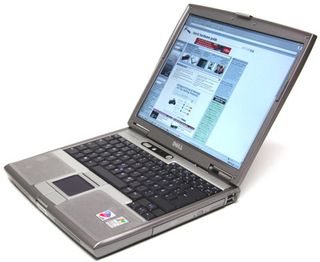Squeezing More Life Out of Your Notebook's Battery Part II
We were surprised by the many disparate sources of a notebook's battery drain. The complex interplay between software, components and peripherals during the tests we ran provided the basis for a checklist of what to do and what not to do to get the most out of any notebook's battery charge.
Introduction
"Squeezing More Life Out of Your Notebook's Battery Part I" covered battery-saving tweaks and technologies and industry initiatives and failures to develop notebooks that run eight hours on a charge. The power demands of the different notebook components and what to look out for in the way of battery technologies when selecting a notebook were discussed.
Now, we walk you through 20 practical user scenarios to show how usage characteristics can have a marked influence on battery life. We also list 10 things you can do to prolong your notebook's battery life.
Test Conditions And System

The Dell Latitude D610 comes equipped with a Pentium M 750 and 1 GB RAM.
To measure battery life, we used a typical business laptop, the Dell Latitude D610. The D610 is based on Intel's second generation Mobile Centrino Technology, also known by its code name, Sonoma. We've already reviewed a model quite similar to the D610 used here in our article on the 915GM chipset entitled "Intel 915GM: A Worthy Successor to the 855GME?"
All measurements were taken with display brightness set to 100 cd/m2. Before every test, we made sure to fully charge the battery with the notebook turned off. We also used a custom programmed tool to measure lifetime. This tool makes an entry into a text file every ten seconds until the notebook turns off when the battery becomes sufficiently discharged to force a shutdown.
We work our way through 18 different real-world but also partly extreme testing scenarios to show how specific usage behaviors and correct or incorrect system configuration settings can have a profound impact on battery lifetime.
The battery lifetime serves as a point of reference for all test results, measured by how long the battery lasts on a test system running exclusively in idle mode. This mode of operation means that the notebook is turned on and then left almost completely alone (we still need to record our text file entry every ten seconds, of course). Applicable power-saving mechanisms, which we'll get into in more detail later in this section, can make a big difference in the results we measure.
Sign up to get the BEST of Tom’s Guide direct to your inbox.
Upgrade your life with a daily dose of the biggest tech news, lifestyle hacks and our curated analysis. Be the first to know about cutting-edge gadgets and the hottest deals.
Current page: Squeezing More Life Out of Your Notebook's Battery Part II
Next Page Battery Life Under Heavy Graphics Load